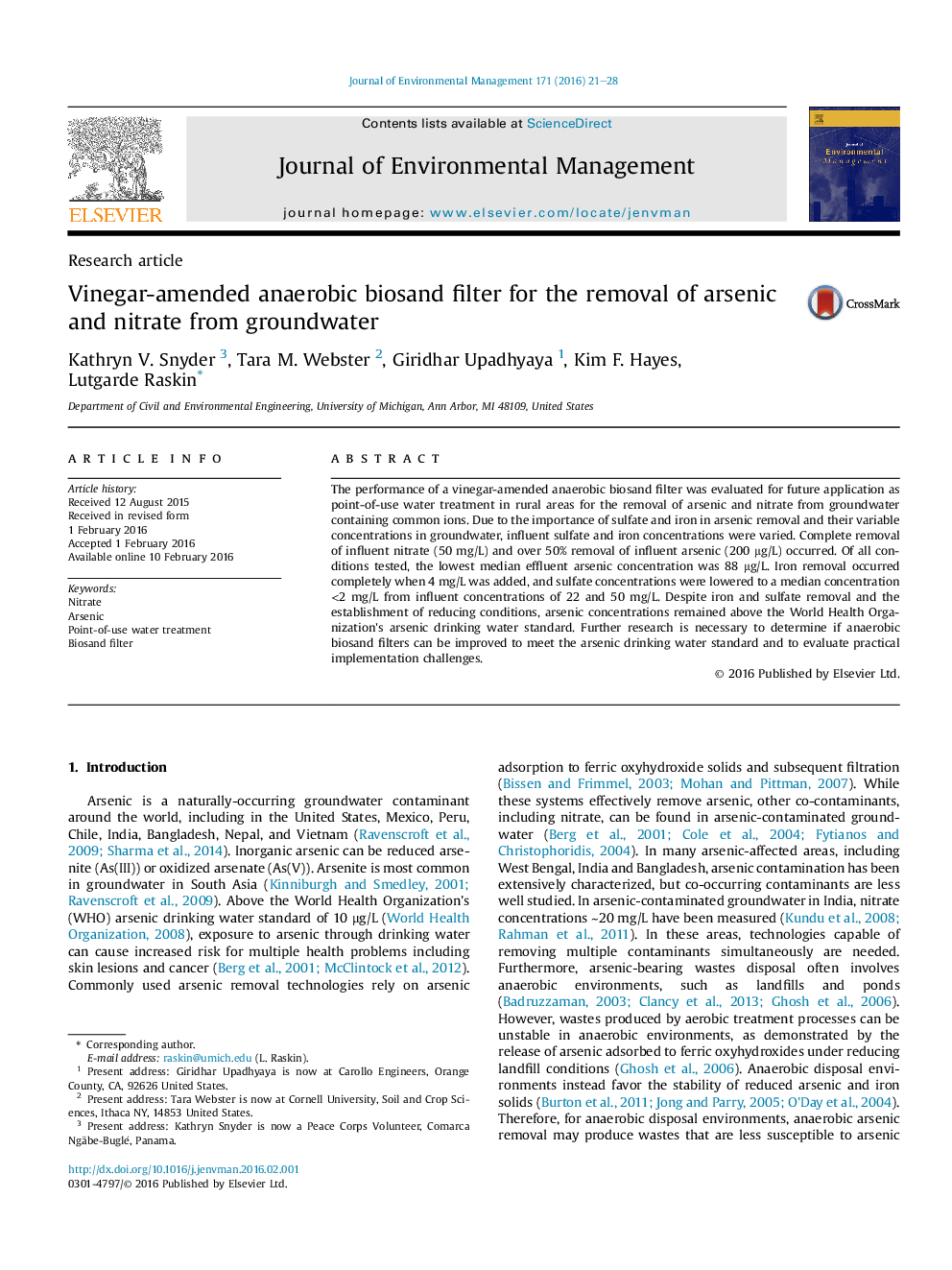| Article ID | Journal | Published Year | Pages | File Type |
|---|---|---|---|---|
| 1055293 | Journal of Environmental Management | 2016 | 8 Pages |
•A vinegar-amended biosand filter completely removed 50 mg/L nitrate.•Arsenic removal was >50%, but did not meet drinking water standards.•Arsenic removal was not improved by increased influent sulfate and iron.
The performance of a vinegar-amended anaerobic biosand filter was evaluated for future application as point-of-use water treatment in rural areas for the removal of arsenic and nitrate from groundwater containing common ions. Due to the importance of sulfate and iron in arsenic removal and their variable concentrations in groundwater, influent sulfate and iron concentrations were varied. Complete removal of influent nitrate (50 mg/L) and over 50% removal of influent arsenic (200 μg/L) occurred. Of all conditions tested, the lowest median effluent arsenic concentration was 88 μg/L. Iron removal occurred completely when 4 mg/L was added, and sulfate concentrations were lowered to a median concentration <2 mg/L from influent concentrations of 22 and 50 mg/L. Despite iron and sulfate removal and the establishment of reducing conditions, arsenic concentrations remained above the World Health Organization's arsenic drinking water standard. Further research is necessary to determine if anaerobic biosand filters can be improved to meet the arsenic drinking water standard and to evaluate practical implementation challenges.
Graphical abstractFigure optionsDownload full-size imageDownload as PowerPoint slide
